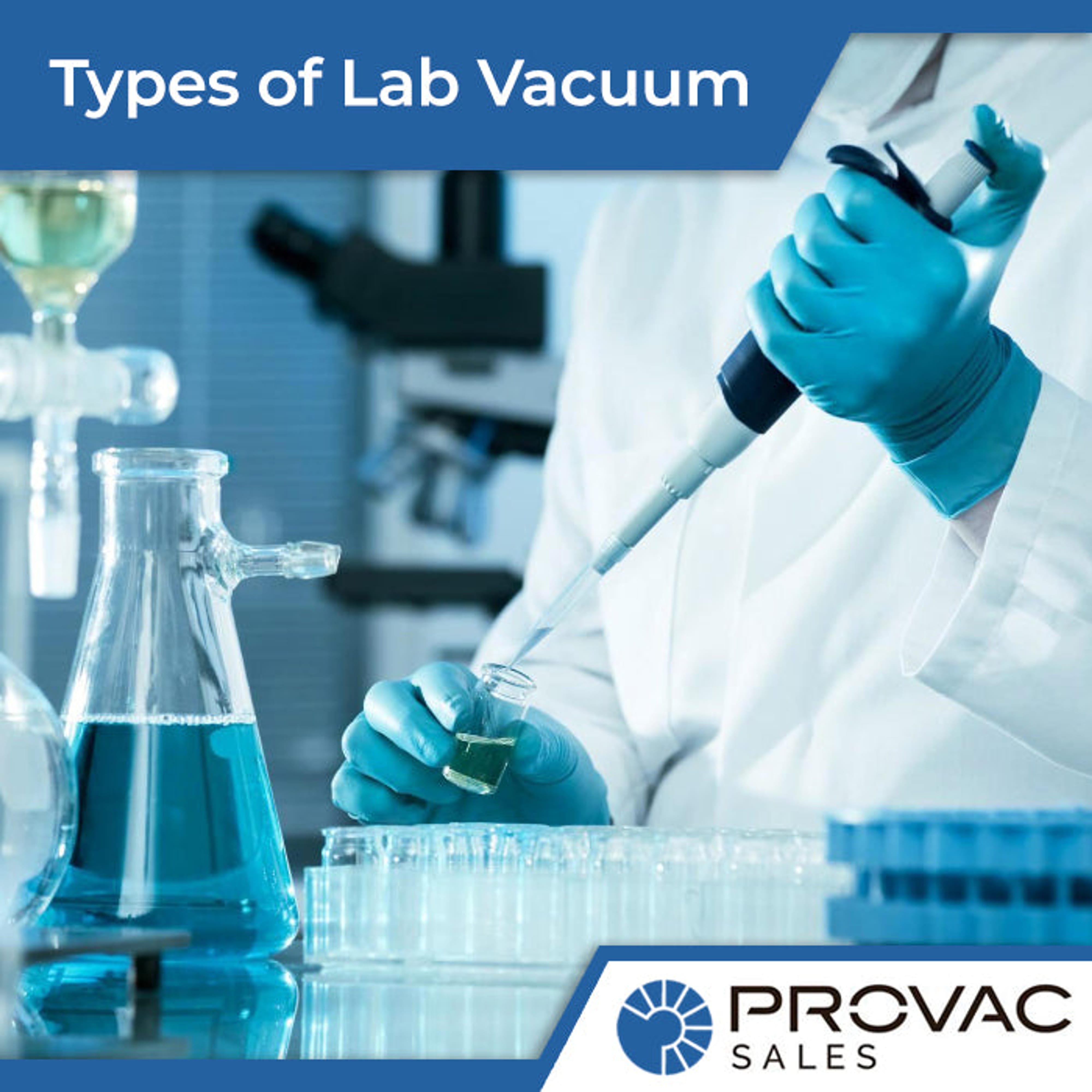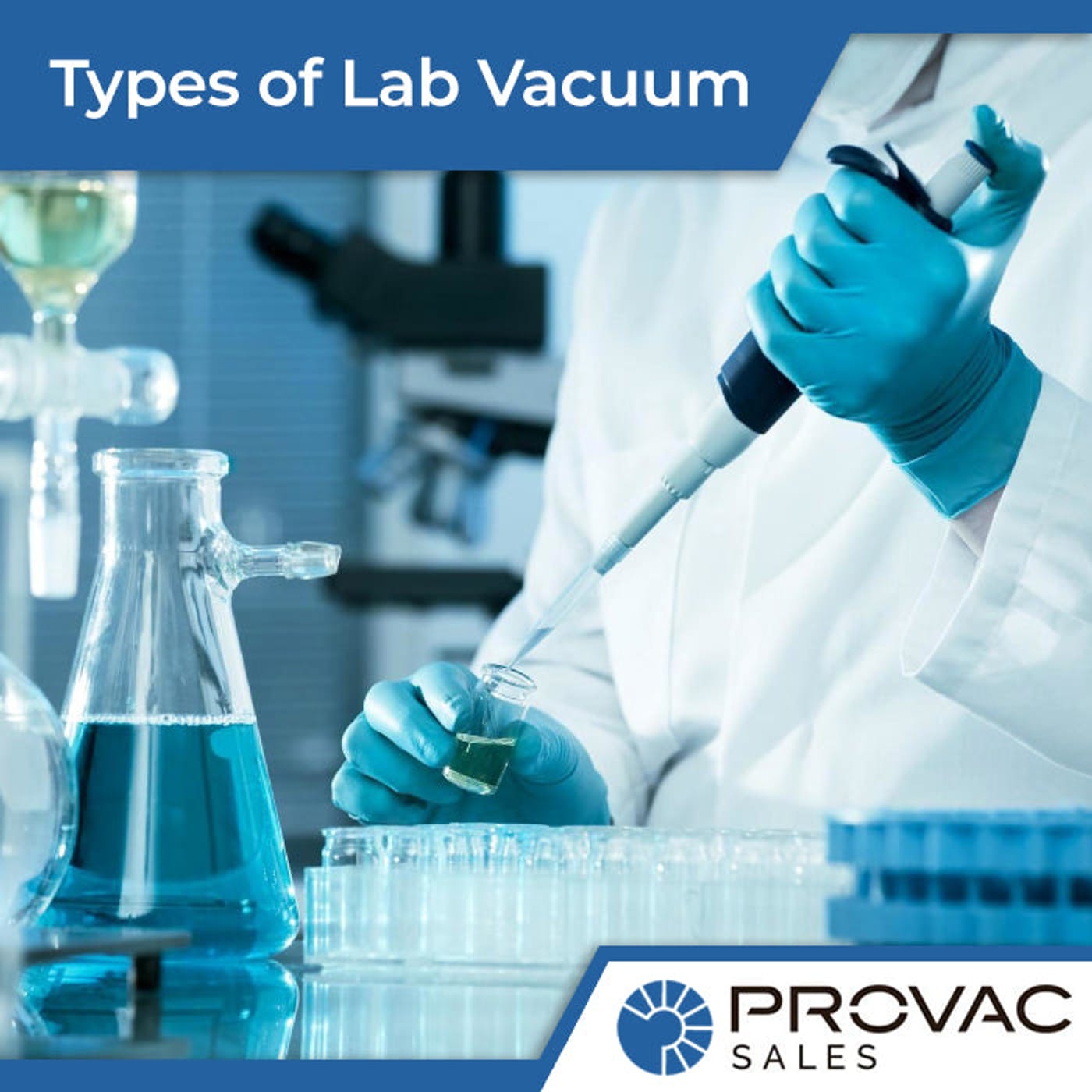When looking for a vacuum pump for use in a laboratory, there are several options to consider if you want to choose a pump that best suits your application. It is worth noting that there are several types of vacuum pumps that offer ultimate vacuum levels and varying displacement capacities.
There are four types of vacuum pumps commonly used in laboratories for concentration, drying (lyophilization), and evaporation.
RV or Rotary Vane Vacuum Pumps
Traditional oil sealed rotary vane vacuum pumps are the most commonly used pumps because they are less costly to purchase and maintain, can be used in a variety of applications, and the contamination can be flushed with fluid changes. Rotary vane pumps use oil or inert fluids to lubricate working parts, ensure a tight seal, and remove heat, cooling the rotors in the process.
Solvents that aren’t recovered or trapped before entering a rotary vane vacuum pump can condense in the oil, damaging the pump’s internals. When using an RV vacuum pump, it is vital that you collect the evaporated vapors prior to enter. Cold Traps or Condensers are often used to protect the pump by collecting these vapors.
Another RV pump shortcoming is that the oil needs to be changed from time to time - a process that can be time-consuming and costly. RV pump manufacturers recommend checking the oil in an RV pump regularly. For optimal performance, the oil in RV pumps needs to be replaced as soon as a change in color is detected. For hydrocarbon-based oils, the “normal” color will be a hay-colored fluid; darkening or browning of the oil indicates a thermal breakdown and that it is time to flush the fluid.
The life of rotary vane vacuum pumps is dependent on how well the oil is maintained and if preventative maintenance has been performed. Wear parts including vanes, o-rings, bearings, and gaskets need to be replaced at certain intervals (refer to manufacturer’s operation manual for specifics) to extend the operating life of the pump and prevent damage to major hard parts.
Rotary Vane pumps have very high displacement capacities and reach deep ultimate vacuum levels, which makes them an excellent option for freeze drying applications. Rotary vane pumps work particularly well for aqueous solvent and samples with very high boiling points and whose vapors you can trap with ease before they reach the pump. A great benefit of using an oil-sealed rotary vane pump is that if contaminants enter the unit, the fluid can be flushed which quickly removes much of the contamination.
Diaphragm Vacuum Pumps
A diaphragm vacuum pump is a dry pump that operates using a rotating piston that closes and opens internal diaphragms to move air. The unique design of a diaphragm pump eliminates the need to use oil. Corrosion-resistant models are available which include diaphragms made with polytetrafluoroethylene, which makes the pump less disposed to damage by corrosive vapors.
While the up-front cost of a diaphragm pump can be higher than an oil-sealed rotary vane, a major advantage is that diaphragm pumps don’t require oil to operate. As a result, they are easier and cheaper to maintain than those pumps that require oil. These pumps are well able to handle highly-viscous liquids and can be used to run a range of samples, but applications are limited to specimens that require higher ultimate vacuum levels.
The ultimate vacuum levels of diaphragm pumps aren’t particularly deep, and their displacement capacities are a bit lower than those of other vacuum pump types.
These pumps are among the most corrosion-and-chemical-resistant pumps available on the market. As a result, almost all types of samples, and that includes those containing a combination of acids and solvents, can be used in these pumps. Diaphragm pumps are an excellent choice for both concentration and evaporation. However, they cannot be used for freeze-drying since their vacuum depth is not enough.
Combination or Hybrid Vacuum Pumps
Hybrid or combination vacuum pumps have both a Diaphragm and Rotary Vane pump in a single vacuum pump. In these pumps, the diaphragm pump maintains the oil of the Rotary Vane pump under negative pressure to eliminate or reduce the amount of vapor going through the pump and condensing within the oil. This approach ensures the oil remains cleaner for longer, allowing for less frequent oil changes – the oil in combination vacuum pumps lasts up to 10x longer between changes as compared to Rotary Vane Pumps.
While the up-front costs of a Hybrid vacuum pump might be way higher than those of an RV pump, the operation costs are much lower since lesser oil replacement is required and little time is lost when changing the oil. The displacement capacity and ultimate vacuum level with hybrid pumps are very similar to that of Rotary Vane pumps. Since diaphragm pumps are part of the combination pump’s design, the pumps are capable of handling solvents and acids better than Rotary Vane pumps.
These pumps are best suited for freeze-drying volatile or corrosive samples since they can be used with a variety of acidic samples and others that contain harsh chemicals like Nitric acid, HBe, acetonitrile, and TFA.
Scroll Vacuum Pumps
These are dry pumps that employ the use of two orbital scroll plates. The orbital scrolls compress vapors and air and move them to the pump’s exhaust. While these pumps have a much higher up-front cost, their lifetime operation cost is way lower than other pumps since they do not require oil to operate and only need minimal maintenance.
Scroll pumps have wear parts that need to be replaced at certain intervals including tip seals, o-rings, and bearings (see original manufacture manual for specific recommendations). Scroll pumps are hydrocarbon-free, which means that they are more environmentally friendly than most types of vacuum pump available. These pumps are typically quieter than comparable oil sealed vane pumps during operation. The lack of oil mist in the exhaust and quieter operation, make scroll pumps an ideal candidate for in-laboratory use.
Since the scrolls in these pumps are made using metal, even on corrosion-resistant and chemical-resistant models, the recommendation is that you only use samples with acids below 20 percent. Scroll vacuum pumps have higher displacement capacities and are capable of reaching deeper ultimate vacuum levels compared to diaphragm pumps.
These pumps are best for freeze-drying since they can be used with solvent and aqueous solvent samples like acetonitrile. Scroll pumps can also work with concentration applications. On the other hand, the pump’s cost tradeoff could make using another pump type more attractive.
Conclusion
The main thing to remember when it comes to vacuum pumps is this – whatever goes into your pump, will, at some point, come out! Removing contamination as much as possible prior to entering the vacuum pump will lengthen the lifespan of your pump. Although your pump has filters, it is essential that you still take other precautions when handling samples that involve potentially harmful materials. Using a fume hood for venting is a must when handling hazardous samples.





